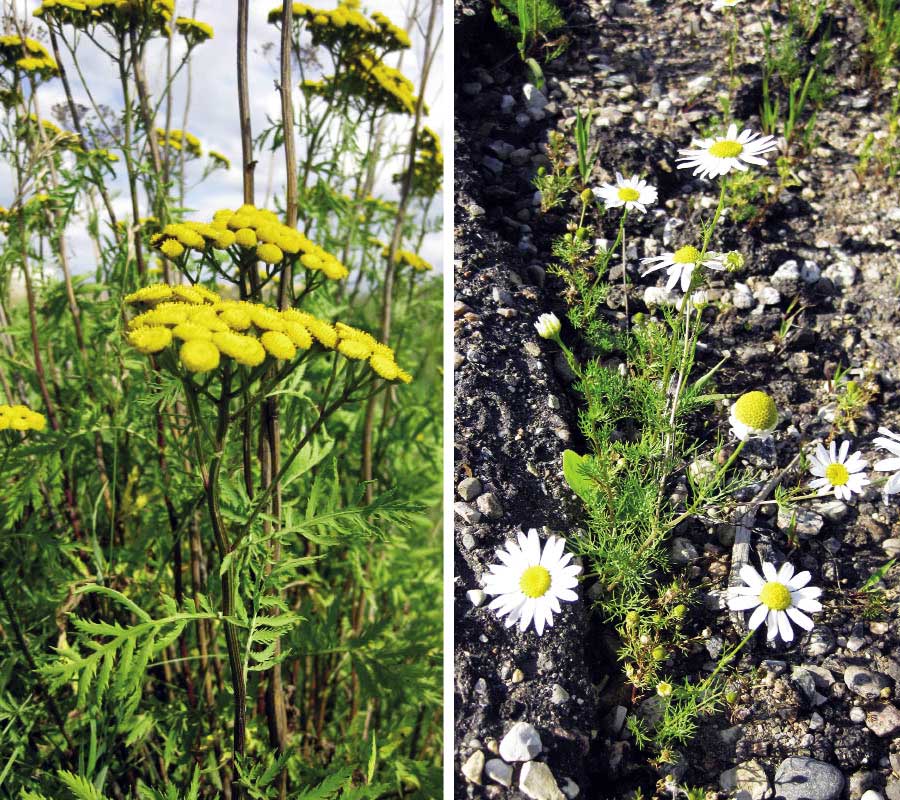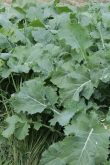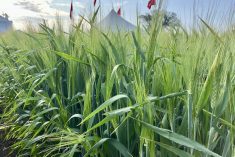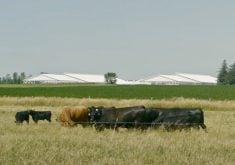A string of wet years has created perfect conditions for common tansy and scentless chamomile to gain a foothold in pastures beyond their traditional stomping grounds.
Both are prolific seed producers. Tansy yields up to 25,000 seeds per stem and one scentless chamomile plant produces anywhere from 300,000 to a million seeds a year. The seeds are spread by drifting snow, run-off, birds, animals, vehicles, equipment, contaminated seed, grain and hay and germinate readily in any moist disturbed earth. Both plants often appear in washouts, tire rut, cattle trails and tillage tracks when attempts are made to repair damaged land.
Read Also

Treaty Land Sharing Network expands reach in Saskatchewan and Alberta
The Treaty Land Sharing Network, which connects land holders with First Nations and Metis people, has expanded since it began in 2018
Saskatchewan Agriculture specialists John Hauer and Clark Brenzil, who hosted webinars on controlling these invasive weeds this spring advise having a plan of attack for dealing with any invasive weed before they take hold of a field.
Invasive weeds, by definition, are not native to Canada, so no natural checks and balances are around to control them. Tansy and scentless chamomile arrived with European settlers. They may have hitched a ride in contaminated seed or been brought in deliberately as ornamentals, or in the case of tansy, for medicinal purposes.
Both are seen as noxious weeds in many jurisdictions across North America, meaning they present enough of a danger weed control officers can order they be controlled.
Control almost always requires a number of steps. “There is no one-time simple fix,” says Hauer. The first move is to identify what you’re fighting.
Common tansy is a perennial with distinct clusters of yellow button-like flowers at the tops of several purplish-red stems growing from the same root with sharply divided, fern-like leaves.
It contains compounds that give it a distinct odour when disturbed and produce the neurotoxin thujone that can affect cattle when large amounts are consumed. Deaths are rare, however, because cattle find tansy unpalatable, although they will eat young growth when desirable forage is scarce. The most common outcome from too much tansy is abortion.
Scentless chamomile is an annual that can act like a biennial or short-live perennial. It’s often confused with another invasive plant, ox-eye daisy, because the white flowers with prominent yellow buttons are almost identical. The most visible difference is the fine, carrot-top-like leaves of scentless chamomile. This weed blooms continuously and the seeds germinate throughout the growing season. Fall seedlings can overwinter in the rosette stage.
Cattle avoid grazing scentless chamomile, as well, when they have a choice. Sheep and goats, on the other hand, readily consume it as well as tansy so they offer a control option for these weeds.
Scentless chamomile seeds can survive digestion in the rumen, but it’s not known whether the same holds true for tansy seed.
Both species are most likely to first appear in areas where snow accumulates and soil stays moist, such as ditches, field perimeters, fencelines, shelterbelts, lowlands, runs, riparian areas, stock trails and watering areas.
- More from the Canadian Cattlemen: Swift Current researchers take the long view
For small patches the best control tool is a shovel to get all the roots. Bag all the plant material and either burn it or dump it in a landfill. Don’t leave anything behind. Immature flowers on uprooted plants left on the soil can still produce viable seed.
Tansy has a slightly rhizomatous (horizontal) root and small bits left intact can send up new shoots. Scentless chamomile has big bunchy roots capable of holding enough soil to give the plant a new start if left on top of moist soil.
It is important to return to the site every so often to check for escaping plants. Seed from both weeds remains viable for at least 10 years in the soil and potentially as long as 25 years.
Tansy is highly competitive and chokes out productive perennials, especially in unfertile soils.
Scentless chamomile is more of an opportunistic weed, persisting around the perimeter and in low areas and sneaking into bare ground when conditions allow.
An overall control strategy is to maintain healthy, competitive forage stands by not overgrazing. Fertilizing may help improve vigour of the desirable species.
Control
Once weed patches spread beyond what can be removed manually, you’ll need an integrated approach to manage the infestation.
Common tansy
Mowing tansy before flowering limits seed production but won’t get rid of the problem. Depending on the site and year, you may have to mow a second time later on to keep the regrowth from flowering.
Hauer says the most effective approach is to combine mowing with herbicide control of the regrowth. There are several broadleaf herbicides available to control or suppress tansy, however, they take out legumes as well.
Spot spraying may be an option for patchy infestations.
Spot spraying with a non-selective herbicide such as glyphosate will kill tansy, but you’ll lose all of the plants surrounding the tansy leaving a sunny opening conducive to tansy seed germination.
He advises consulting a specialist to select the product that will work best in your situation. Some have restrictions near waterbodies, while others carry over in the soil for up to five years. That provides superior weed control, but has implications for subsequent annual crops.
“Follow up long term. Don’t just spray and forget about it. Go back to make sure and spray again,” Hauer says. “A little expense early will save big expenses later.”
Cultivation in itself isn’t reliable and may add to the problem because of regrowth from roots dragged around the field and soil disturbance that promotes seed germination. Plan to follow up with a herbicide treatment.
And clean your equipment after it’s used in fields infested with tansy and scentless chamomile. Likewise, don’t transport seed-contaminated bales.
If the infestation is severe, consider turning the forage crop over to annual crops for several years of regular applications with crop herbicides.
A consortium of public and private funders in Canada and the U.S. has been working to identify tansy pests native to Europe that could be introduced in North America for biological control. Six insect species have been selected for further testing to ensure they target tansy alone.
Scentless chamomile
Brenzil says two of three insects from Europe that attack scentless chamomile appear to have established in Saskatchewan since their release in the ’90s.
The seed-head weevil consumes 10 seeds in its lifetime, which isn’t much relative to the 150 seeds in a single scentless chamomile flower, however, as many as 14 weevils have been found in a single seed head.
The gall midge is a prolific insect that produces four generations a year. Most of its lifespan is spent inside galls formed at the growing points, which alter the growth of the plant. Spreading the midge to new locations is as easy as moving plants with galls.
A Saskatchewan ADOPT (agriculture demonstration of practices and technologies) project comparing chemical and biological control of scentless chamomile in grass-alfalfa stands found insects offered no immediate control in 2011 and 2012. The report is available on the Saskatchewan Forage Council website, www.saskforage.ca.
Mowing prevents initial seed, but buds will erupt from side branches below the cutting height. Ensiling fields with widespread established infestations and feeding the silage onsite showed mixed results.
As with tansy, herbicides and rotating with annual crops is another option.
“Prevention is the key and the cheapest way of dealing with it,” Brenzil says. “Once introduced, find it and eradicate it right away — no survivors; no situation where you say, ‘I’ll get it next time,’ because with potentially a million seeds per plant, next time may be over the next 10 to 15 years.”

















